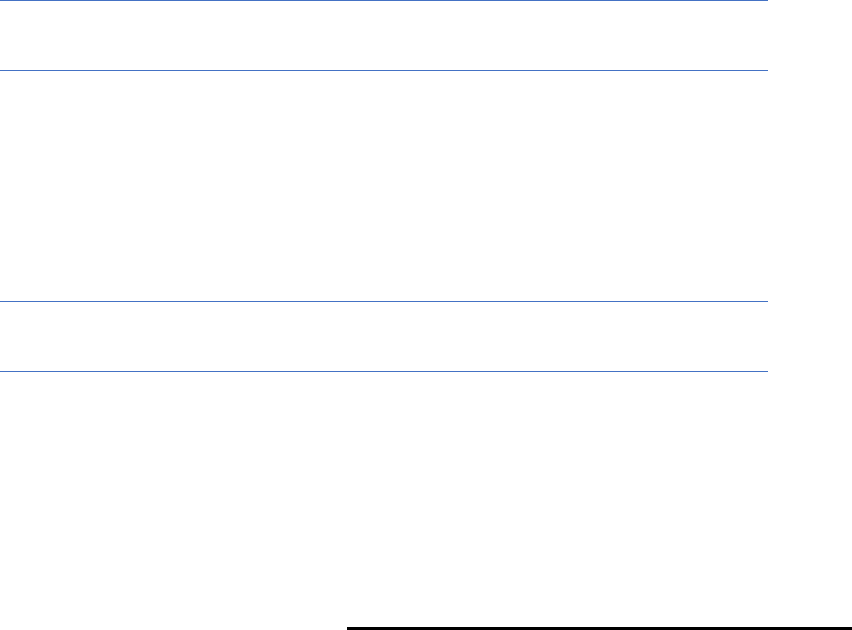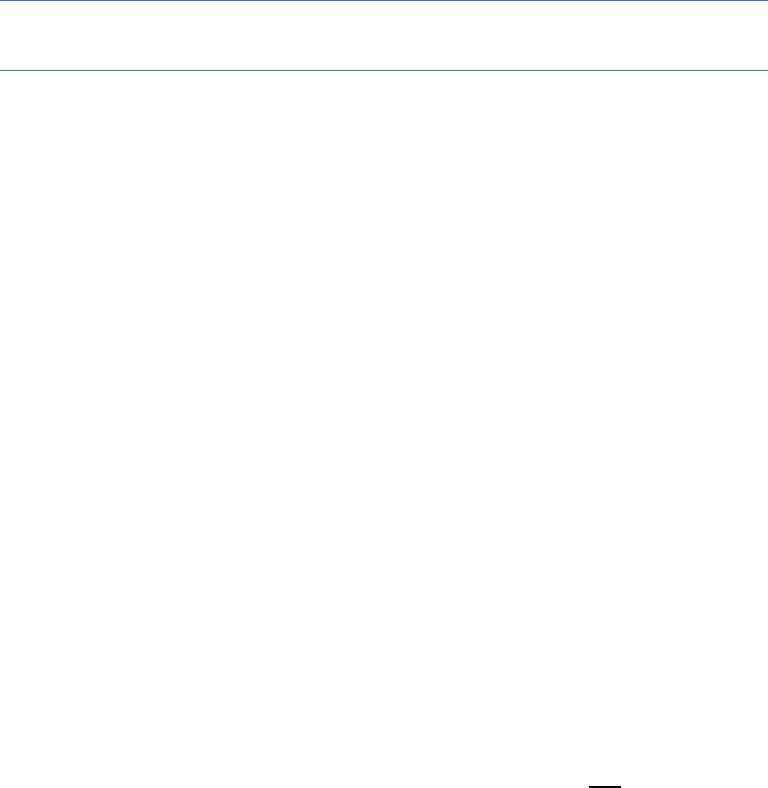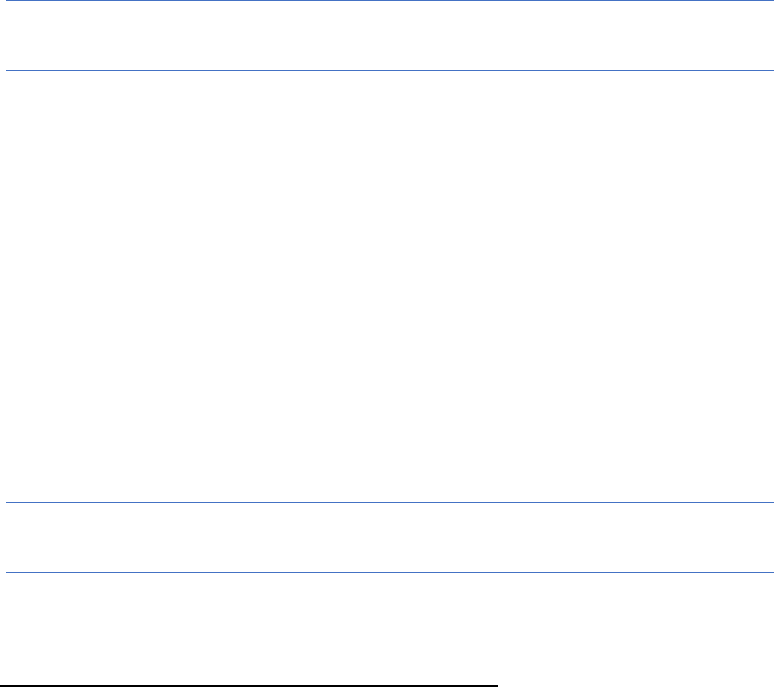
Sample Plan for COVID-19
Exposure Prevention, Preparedness, and Response
Developed by Construction Industry Safety Coalition (CISC)
1
March 25, 2020
Revised by The Associated General Contractors of America (AGC) March 31, 2020
****
Every construction project is different. What is feasible and appropriate for any one project
depends on its size, location and other unique characteristics. To help construction contractors
develop a sound approach to each of their projects, the CISC is pleased to make this sample plan
available. Neither the coalition nor its individual members intend this document to be a
definitive statement of the protocols and procedures that are applicable to each and every
project. Nor are they endeavoring to provide legal or other professional advice. This
document should NOT be construed as
legal advice or any other expression of the scope or
nature of a construction contractor’s legal obligation to provide employment and a safe place of
employment to its employees, particularly under the unprecedented circumstances that the
COVID-19 outbreak has created. In addition, new and better information could well supersede
the information included in this document. As the situation evolves, construction contractors
should continue to monitor the environment in which they are working and related developments
and react accordingly.
****
[Name of Company] (hereinafter “Company”) takes the health and
safety of our employees very seriously. With the spread of the coronavirus or “COVID-19,”
a respiratory disease caused by the SARS-CoV-2 virus, the Company must remain vigilant in
mitigating the outbreak. The Company is a proud part of the construction industry, which
many have deemed “essential” during this Declared National Emergency. In order to be safe
and maintain operations, we have developed this COVID-19 Exposure Prevention,
Preparedness, and Response Plan to be implemented, to the extent feasible and appropriate,
throughout the Company and at all of our jobsites. The Company has also identified a team
of employees to monitor the related guidance that U.S. Center for Disease Control and
Prevention (“CDC”) and Occupational Safety and Health Administration (“OSHA”) continue
to make available.
This Plan is based on information available from the CDC and OSHA at the time of its
development, and is subject to change based on further information provided by the CDC,
OSHA, and other public officials. The Company may also amend this Plan based on
operational needs.
1
The CISC is comprised of over 25 construction industry trade associations representing all
aspects of the construction industry. The CISC was formed to provide information to the
Occupational Safety and Health Administration and contractors on important safety and health
issues. This document is a “template” that individual contractors should review carefully and tailor
to their own work and jobsites.

2
I. Responsibilities of Managers and Supervisors
All managers and supervisors must be familiar with this Plan and be ready to answer
questions from employees. Managers and supervisors must set a good example by following
this Plan at all times. This involves practicing good personal hygiene and jobsite safety
practices to prevent the spread of the virus. Managers and supervisors must encourage this
same behavior from all employees.
II. Responsibilities of Employees
The Company is asking every one of our employees to help with our prevention efforts while
at work. In order to minimize the spread of COVID-19 at our jobsites, everyone must play
their part. As set forth below, the Company has instituted various housekeeping, social
distancing, and other best practices at our jobsites. All employees must follow these. In
addition, employees are expected to report to their managers or supervisors if they are
experiencing signs or symptoms of COVID-19, as described below. If you have a specific
question about this Plan or COVID-19, please ask your manager or supervisor. If they
cannot answer the question, please contact [Title of Manager or Supervisor]
OSHA and the CDC have provided the following control and preventative guidance for all
workers, regardless of exposure risk:
• Frequently wash your hands with soap and water for at least 20 seconds. When
soap and running water are unavailable, use an alcohol-based hand rub with at
least 60% alcohol.
• Avoid touching your eyes, nose, or mouth with unwashed hands.
• Follow appropriate respiratory etiquette, which includes covering for coughs and
sneezes.
• Avoid close contact with people who are sick.
In addition, employees must familiarize themselves with the symptoms of COVID-19, which
include the following:
• Coughing;
• Fever;

3
• Shortness of breath, difficulty breathing; and
• Early symptoms such as chills, body aches, sore throat, headache, diarrhea,
nausea/vomiting, and runny nose.
If you develop a fever and symptoms of respiratory illness, such as cough or shortness of
breath, DO NOT GO TO WORK and call your supervisor and healthcare provider right
away. Likewise, if you come into close contact with someone showing these symptoms, call
your supervisor and healthcare provider right away.
III. Job Site Protective Measures
The Company has instituted the following protective measures at all jobsites.
A. General Safety Policies and Rules
• Any employee/contractor/visitor showing symptoms of COVID-19 will be asked
to leave the jobsite and return home.
• Safety meetings will be by telephone, if possible. If safety meetings are
conducted in-person, attendance will be collected verbally and the
foreman/superintendent will sign-in each attendee. Attendance will not be tracked
through passed-around sign-in sheets or mobile devices. During any in-person
safety meetings, avoid gathering in groups of more than 10 people and
participants must remain at least six (6) feet apart.
• Employees must avoid physical contact with others and shall direct others (co-
workers/contractors/visitors) to increase personal space to at least six (6) feet,
where possible. Where work trailers are used, only necessary employees should
enter the trailers and all employees should maintain social distancing while inside
the trailers.
• All in-person meetings will be limited. To the extent possible, meetings will be
conducted by telephone.
• Employees will be encouraged to stagger breaks and lunches, if practicable, to
reduce the size of any group at any one time to less than ten (10) people.
• The Company understands that due to the nature of our work, access to running
water for hand washing may be impracticable. In these situations, the Company
will provide, if available, alcohol-based hand sanitizers and/or wipes.

4
• Employees should limit the use of co-workers’ tools and equipment. To the extent
tools must be shared, the Company will provide alcohol-based wipes to clean
tools before and after use. When cleaning tools and equipment, consult
manufacturing recommendations for proper cleaning techniques and restrictions.
• Employees are encouraged to limit the need for N95 respirator use, by using
engineering and work practice controls to minimize dust. Such controls include
the use of water delivery and dust collection systems, as well as limiting exposure
time.
• The Company will divide crews/staff into two (2) groups where possible so that
projects can continue working effectively in the event that one of the divided
teams is required to quarantine.
• As part of the division of crews/staff, the Company will divide employees into
dedicated shifts, at which point employees will remain with their dedicated shifts
for the reminder of the project. If there is a legitimate reason for an employee to
change shifts, the Company will have sole discretion in making that alteration.
• Employees are encouraged to minimize ride-sharing. While in vehicles,
employees must ensure adequate ventilation.
• If practicable, each employee should use/drive the same truck or piece of
equipment every shift.
• In lieu of using a common source of drinking water, such as a cooler, employees
should use individual water bottles.
[Additional Jobsite Safety Precautions Include: Additional Precautions that May be Appropriate
for Specific Companies, Business Operations or Projects ].
5
B. Workers entering Occupied Building and Homes
• Construction and maintenance activities within occupied homes, office buildings,
and other establishments, present unique hazards with regards to COVID-19
exposures. Everyone working within such establishments should evaluate the
specific hazards when determining best practices related to COVID-19.
• During this work, employees must sanitize the work areas upon arrival,
throughout the workday, and immediately before departure. The Company will
provide alcohol-based wipes for this purpose.
• Employees should ask other occupants to keep a personal distance of six (6) feet
at a minimum. Workers should wash or sanitize hands immediately before
starting and after completing the work.
C. Job Site Visitors
• The number of visitors to the job site, including the trailer or office, will be
limited to only those necessary for the work.
• All visitors will be screened in advance of arriving on the job site. If the visitor
answers “yes” to any of the following questions, he/she should not be permitted to
access the jobsite:
o Have you been confirmed positive for COVID-19?
o Are you currently experiencing, or recently experienced, any acute respiratory
illness symptoms such as fever, cough, or shortness of breath?
o Have you been in close contact with any persons who has been confirmed
positive for COVID-19?
o Have you been in close contact with any persons who have traveled and are
also exhibiting acute respiratory illness symptoms?
• Site deliveries will be permitted but should be properly coordinated in line with
the employer’s minimal contact and cleaning protocols. Delivery personnel
should remain in their vehicles if at all possible.
D. Personal Protective Equipment and Work Practice Controls
• In addition to regular PPE for workers engaged in various tasks (fall protection,
hard hats, hearing protection), the Company will also provide:

6
o Gloves: Gloves should be worn at all times while on-site. The type of glove
worn should be appropriate to the task. If gloves are not typically required for
the task, then any type of glove is acceptable, including latex gloves.
Employees should avoid sharing gloves.
o Eye protection: Eye protection should be worn at all times while on-site.
o NOTE: The CDC is currently not recommending that healthy people wear
N95 respirators to prevent the spread of COVID-19. Nevertheless, employees
must wear N95 respirators if required by the work and if available.
• Due to the current shortage of N95 respirators, the following Work Practice
Controls should be followed:
o Keep dust down by using engineering and work practice controls, specifically
through the use of water delivery and dust collection systems.
o Limit exposure time to the extent practicable.
o Isolate workers in dusty operations by using a containment structure or
distance to limit dust exposure to those employees who are conducting the
tasks, thereby protecting nonessential workers and bystanders.
• Institute a rigorous housekeeping program to reduce dust levels on the jobsite.
IV. Job Site Cleaning and Disinfecting
The Company has instituted regular housekeeping practices, which include cleaning and
disinfecting frequently used tools and equipment, and other elements of the work
environment, where possible. Employees should regularly do the same in their assigned
work areas.
• Jobsite trailers and break/lunchroom areas will be cleaned at least once per day.
Employees performing cleaning will be issued proper personal protective
equipment (“PPE”), such as nitrile, latex, or vinyl gloves and gowns, as
recommended by the CDC.
• Any trash collected from the jobsite must be changed frequently by someone
wearing nitrile, latex, or vinyl gloves.
• Any portable jobsite toilets should be cleaned by the leasing company at least
twice per week and disinfected on the inside. The Company will ensure that hand

7
sanitizer dispensers are always filled. Frequently touched items (i.e. door pulls
and toilet seats) will be disinfected frequently.
• Vehicles and equipment/tools should be cleaned at least once per day and before
change in operator or rider.
• OSHA has indicated that a reliable report that an employee has tested positive for
COVID-19 does not typically require an employer to perform special cleaning or
decontamination of work environments, unless those environments are visibly
contaminated with blood or other bodily fluids.
2
Notwithstanding this, the
Company will clean those areas of the jobsite that a confirmed-positive individual
may have contacted and it will do so before employees can access that work space
again.
• The Company will ensure that any disinfection shall be conducted using one of
the following:
o Common EPA-registered household disinfectant;
o Alcohol solution with at least 60% alcohol; or
o Diluted household bleach solutions (if appropriate for the surface).
• The Company will maintain Safety Data Sheets of all disinfectants used on site.
2
https://www.osha.gov/SLTC/covid-19/controlprevention.html
[Additional Cleaning and Disinfection Guidelines Include: Additional Cleaning Requirements
that May be Appropriate if Hazardous Materials are Used Onsite ].

8
V. Jobsite Exposure Situations
• Employee Exhibits COVID-19 Symptoms
If an employee exhibits COVID-19 symptoms, the employee must remain at home until he or
she is symptom free for 72 hours (3 full days) without the use of fever-reducing or other
symptom-altering medicines (e.g., cough suppressants). The Company will similarly require
an employee who reports to work with symptoms to return home until he or she is symptom
free for 72 hours (3 full days). To the extent practical, employees are required to obtain a
doctor’s note clearing them to return to work.
• Employee Tests Positive for COVID-19
An employee who tests positive for COVID-19 will be directed to self-quarantine away from
work. Employees that test positive and are symptom free may return to work when at least
seven (7) days have passed since the date of his or her first positive test, and have not had a
subsequent illness. Employees who test positive and are directed to care for themselves at
home may return to work when: (1) at least 72 hours (3 full days) have passed since
recovery;
3
and (2) at least seven (7) days have passed since symptoms first appeared.
Employees who test positive and have been hospitalized may return to work when directed to
do so by their medical care providers. The Company will require an employee to provide
documentation clearing his or her return to work.
• Employee Has Close Contact with an Individual Who Has Tested Positive for
COVID-19
Employees who have come into close contact with an individual who has tested positive for
COVID-19 (co-worker or otherwise) will be directed to self-quarantine for 14 days from the
last date of close contact with that individual. Close contact is defined as six (6) feet for a
prolonged period of time.
If the Company learns that an employee has tested positive, the Company will conduct an
investigation to determine co-workers who may have had close contact with the confirmed-
positive employee in the prior 14 days and direct those individuals who have had close
contact with the confirmed-positive employee to self-quarantine for 14 days from the last
date of close contact with that employee. If applicable, the Company will also notify any
sub-contractors, vendors/suppliers or visitors who may have had close contact with the
confirmed-positive employee. If an employee learns that he or she has come into close
contact with a confirmed-positive individual outside of the workplace, he/she must alert a
3
Recovery is defined as: (1) resolution of fever without the use of fever-reducing
medications and (2) improvement in respiratory symptoms (e.g., cough, shortness of breath).

9
manager or supervisor of the close contact and self-quarantine for 14 days from the last date
of close contact with that individual.
VI. OSHA Recordkeeping
If a confirmed case of COVID-19 is reported, the Company will determine if it meets the
criteria for recordability and reportability under OSHA’s recordkeeping rule. OSHA requires
construction employers to record work-related injuries and illnesses that meet certain
severity criteria on the OSHA 300 Log, as well as complete the OSHA Form 301 (or
equivalent) upon the occurrence of these injuries. For purposes of COVID-19, OSHA also
requires employers to report to OSHA any work-related illness that (1) results in a fatality, or
(2) results in the in-patient hospitalization of one or more employee. “In-patient”
hospitalization is defined as a formal admission to the in-patient service of a hospital or
clinic for care or treatment.
OSHA has made a determination that COVID-19 should not be excluded from coverage of
the rule – like the common cold or the seasonal flu – and, thus, OSHA is considering it an
“illness.” However, OSHA has stated that only confirmed cases of COVID-19 should be
considered an illness under the rule. Thus, if an employee simply comes to work with
symptoms consistent with COVID-19 but is not a confirmed diagnosis, the recordability
analysis is not necessarily triggered at that time.
If an employee has a confirmed case of COVID-19, the Company will conduct an assessment
of any workplace exposures to determine if the case is work-related. Work-relatedness is
presumed for illnesses that result from events or exposures in the work environment, unless it
meets certain exceptions. One of those exceptions is that the illness involves signs or
symptoms that surface at work but result solely from a non-work-related event or exposure
that occurs outside of the work environment. Thus, if an employee develops COVID-19
solely from an exposure outside of the work environment, it would not be work-related, and
thus not recordable.
The Company’s assessment will consider the work environment itself, the type of work
performed, the risk of person-to-person transmission given the work environment, and other
factors such as community spread. Further, if an employee has a confirmed case of COVID-
19 that is considered work-related, the Company will report the case to OSHA if it results in
a fatality within 30 days or an in-patient hospitalization within 24-hours of the exposure
incident.

10
VII. Confidentiality/Privacy
Except for circumstances in which the Company is legally required to report workplace
occurrences of communicable disease, the confidentiality of all medical conditions will be
maintained in accordance with applicable law and to the extent practical under the
circumstances. When it is required, the number of persons who will be informed that an
unnamed employee has tested positive will be kept to the minimum needed to comply with
reporting requirements and to limit the potential for transmission to others. The Company
reserves the right to inform other employees that an unnamed co-worker has been diagnosed
with COVID-19 if the other employees might have been exposed to the disease so the
employees may take measures to protect their own health. The Company also reserves the
right to inform sub-contractors, vendors/suppliers or visitors that an unnamed employee has
been diagnosed with COVID-19 if they might have been exposed to the disease so those
individuals may take measures to protect their own health.
VIII. General Questions
Given the fast-developing nature of the COVID-19 outbreak, the Company may modify this
Plan on a case by case basis. If you have any questions concerning this Plan, please contact
contact [Title of Designated Individual] .
11
COVID-19 Checklist for Employers and Employees
Know the Symptoms of COVID-19
• Coughing, fever, shortness of breath, and difficulty breathing.
• Early symptoms may include chills, body aches, sore throat, headache, diarrhea,
nausea/vomiting, and runny nose. If you develop a fever and symptoms of respiratory
illness, DO NOT GO TO WORK and call your supervisor and health-care provider
immediately. Do the same thing if you come into close contact with someone showing
these symptoms.
Employer Responsibilities
• Develop a COVID-19 Exposure Action Plan.
• Conduct safety meetings (toolbox talks) by phone if possible. If not, instruct employees to
maintain 6-feet between each other. The foreman/supervisor will track attendance verbally
rather than having employees sign an attendance sheet.
• Access to the job site and work trailer will be limited to only those necessary for the work.
• All visitors will be pre-screened to ensure they are not exhibiting symptoms.
• Employees, contractors, and visitors will be asked to leave the jobsite and return home if
they are showing symptoms.
• Provide hand sanitizer and maintain Safety Data Sheets of all disinfectants used on site.
• Provide protective equipment (PPE) to any employees assigned cleaning/disinfecting tasks.
Employee Responsibilities
• Become familiar with the Exposure Action Plan and follow all elements of the Plan.
• Practice good hygiene: wash hands with soap and water for at least 20 seconds. If these
are not available, use alcohol-based hand rub with at least 60% alcohol. Avoid touching
your face, eyes, food, etc. with unwashed hands.
Cleaning/Disinfecting Job Sites and Other Protective Measures
• Clean and disinfect frequently used tools and equipment on a regular basis. This includes
other elements of the jobsite where possible. Employees should regularly do the same in
their assigned work areas.
• Clean shared spaces such as trailers and break/lunchrooms at least once per day.
• Disinfect shared surfaces (door handles, machinery controls, etc.) on a regular basis.
• Avoid sharing tools with co-workers. If not, disinfect before and after each use.
• Arrange for any portable job site toilets be cleaned by the leasing company at least twice
per week and disinfected on the inside.
• Trash collected from the jobsite must be changed frequently by someone wearing gloves.
Personal Protective Equipment and Alternate Work Practice Controls
• Provide and wear the proper PPE.
• Keep the dust down by using engineering and work practice controls, specifically through
the use of water delivery and dust collection systems.
12
COVID-19 Toolbox Talk
What is COVID-19?
The novel coronavirus, COVID-19 is one of seven types of known human coronaviruses.
COVID-19, like the MERS and SARS coronaviruses, likely evolved from a virus previously
found in animals. The remaining known coronaviruses cause a significant percentage of
colds in adults and children, and these are not a serious threat for otherwise healthy adults.
Patients with confirmed COVID-19 infection have reportedly had mild to severe respiratory
illness with symptoms such as fever, cough, and shortness of breath.
According to the U.S. Department of Health and Human Services/Centers for Disease
Control and Prevention (“CDC”), Chinese authorities identified an outbreak caused by a
novel—or new—coronavirus. The virus can cause mild to severe respiratory illness. The
outbreak began in Wuhan, Hubei Province, China, and has spread to a growing number of
other countries—including the United States.
How is COVID-19 Spread?
COVID-19, like other viruses, can spread between people. Infected people can spread
COVID-19 through their respiratory secretions, especially when they cough or sneeze.
According to the CDC, spread from person-to-person is most likely among close contacts
(about 6 feet). Person-to-person spread is thought to occur mainly via respiratory droplets
produced when an infected person coughs or sneezes, like influenza and other respiratory
pathogens. These droplets can land in the mouths or noses of people who are nearby or
possibly be inhaled into the lungs. It is currently unclear if a person can get COVID-19 by
touching a surface or object that has the virus on it and then touching their own mouth, nose,
or possibly their eyes.
In assessing potential hazards, employers should consider whether their workers may
encounter someone infected with COVID-19 in the course of their duties. Employers should
also determine if workers could be exposed to environments (e.g., worksites) or materials
(e.g., laboratory samples, waste) contaminated with the virus.
Depending on the work setting, employers may also rely on identification of sick individuals
who have signs, symptoms, and/or a history of travel to COVID-19-affected areas that
indicate potential infection with the virus, in order to help identify exposure risks for workers
and implement appropriate control measures.
There is much more to learn about the transmissibility, severity, and other features associated
with COVID-19, and investigations are ongoing.

13
COVID-19 Prevention and Work Practice Controls:
Worker Responsibilities
• Frequently wash your hands with soap and water for at least 20 seconds. When soap
and running water are unavailable, use an alcohol-based hand rub with at least 60%
alcohol. Always wash hands that are visibly soiled.
• Cover your mouth and nose with a tissue when you cough or sneeze or use the inside
of your elbow.
• Avoid touching your eyes, nose, or mouth with unwashed hands.
• Avoid close contact with people who are sick.
• Employees who have symptoms (i.e., fever, cough, or shortness of breath) should notify
their supervisor and stay home—DO NOT GO TO WORK.
• Sick employees should follow CDC-recommended steps
. Employees should not return
to work until the criteria to discontinue home isolation are met, in consultation with
healthcare providers and state and local health departments.
General Job Site / Office Practices
• Clean AND disinfect frequently touched objects and surfaces such as workstations,
keyboards, telephones, handrails, and doorknobs. Dirty surfaces can be cleaned with
soap and water prior to disinfection. To disinfect, use
products that meet EPA’s criteria
for use against SARS-CoV-2, the cause of COVID-19, and are appropriate for the
surface.
• Avoid using other employees’ phones, desks, offices, or other work tools and
equipment, when possible. If necessary, clean and disinfect them before and after use.
• Clean and disinfect frequently used tools and equipment on a regular basis.
o This includes other elements of the jobsite where possible.
o Employees should regularly do the same in their assigned work areas.
• Clean shared spaces such as trailers and break/lunchrooms at least once per day.
• Disinfect shared surfaces (door handles, machinery controls, etc.) on a regular basis.
• Avoid sharing tools with co-workers if it can be avoided. If not, disinfect before and
after each use.
• Arrange for any portable job site toilets to be cleaned by the leasing company at least
twice per week and disinfected on the inside.
• Any trash collected from the jobsite must be changed frequently by someone wearing
gloves.
• In addition to regular PPE for workers engaged in various tasks (fall protection, hard
hats, hearing protection), employers will also provide:
o Gloves: Gloves should be worn at all times while on-site. The type of glove
worn should be appropriate to the task. If gloves are not typically required for
the task, then any type of glove is acceptable, including latex gloves. Gloves
should not be shared if at all possible.
o Eye protection: Eye protection should be worn at all times while on-site.
